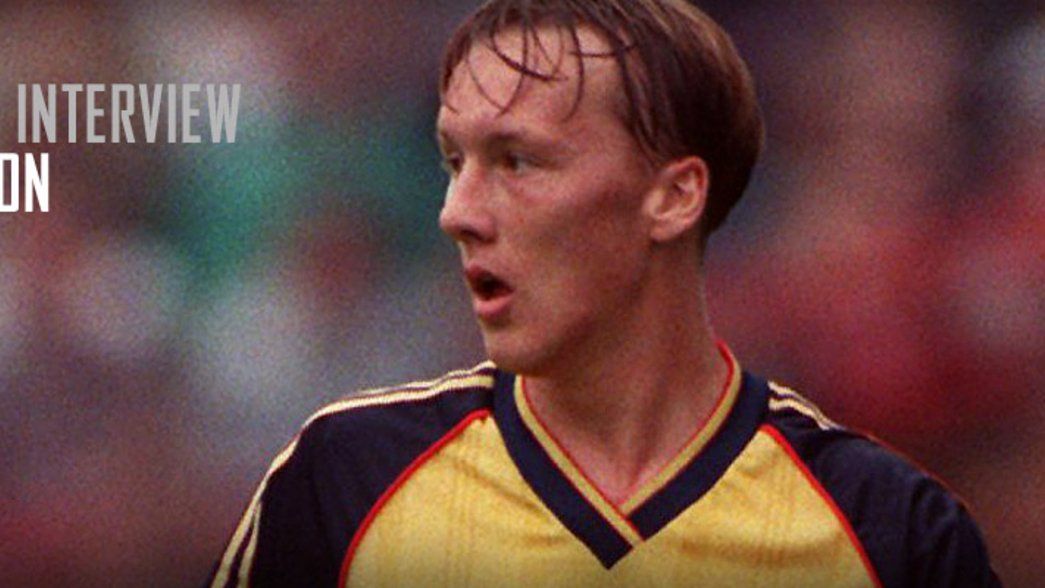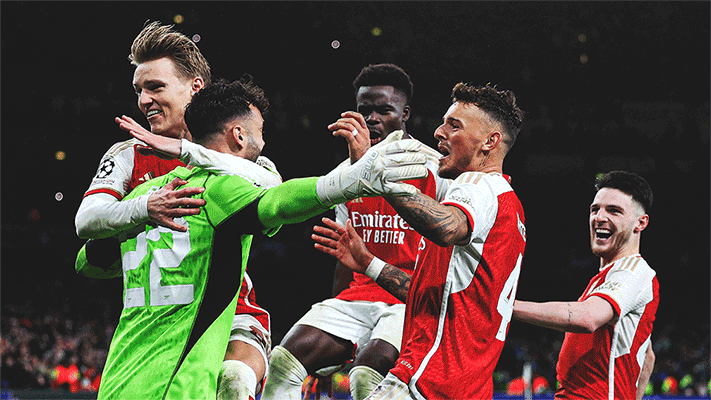These days it's unthinkable for a high-profile football manager to hold a private meeting with his next signing at a motorway service station.
Even if a tipped-off TV crew wasn't pushing a camera into their faces, the flash of a hastily-pointed smart phone would spark 'breaking news' tickers and Twitter trends within moments.
Keeping a deal - or even your interest in a player - under wraps in the age of social media and 24-hour news demands KGB levels of secrecy.
But a service station rendezvous was not uncommon before football became big business. And back in 1988, one roadside meeting nudged along one of the most rewarding transfer deals in Arsenal's history.
The manager and player in question 25 years ago were George Graham and Lee Dixon.
The right back gave Arsenal 14 years of service, making 619 appearances and contributing to nine major trophies. Within 18 months of signing it was, as commentator Brian Moore put it, "a good ball by Dixon, finding Smith" which helped set up that immortal goal for Michael Thomas at Anfield.
And yet, as Dixon explains in our 'Arsenal Legends' series, he was made to sweat before those glory days could begin.
"I actually turned George down there and then in the car, which broke my heart. I ended up crying in the car on the way back to Stoke"
"I met George Graham at the Watford Gap Service Station - a salubrious meeting with George!" recalls Dixon.
"I think he had a Jaguar or something and I remember sitting in his passenger seat and, actually, when he told me what the club was offering me, it was just about less than Stoke had offered me to re-sign for them.
"George made you work for it, he had a pay structure and he wasn't going to break it for anybody. Not that I was asking for the Earth, I was basically just trying to move my family down from Stoke to London.
"I actually turned George down there and then in the car, which broke my heart. I ended up crying in the car on the way back to Stoke with [his manager] Mick Mills, he drove me back.
"To cut a long story short George and I ended up re-meeting a couple of days later because I said 'I need to talk to you'. So I went down to Highbury.
"I think that was the turning point for me, going to the stadium and meeting George again in his office. I walked through the marble halls and I just went to myself, 'whatever happens today, I am not leaving here until I sign', because the place smelt of football.
"It was the place I wanted to be. We ended up thrashing out a deal and George wasn't as happy because he had to give a bit more money away. I wasn't happy because I didn't get what I thought I deserved, but deep down we were both happy. I'd signed for one of the biggest clubs in the world."
If Dixon's career had followed the same trajectory, only 20-odd years later, his arrival would have been a considerably more frantic affair.
Even relative unknowns get the full treatment now - the YouTube highlights reel, the insatiable demand for information, the press conference denials, the announcement and, finally, the exclusive interview with club media.
"Walking through the marble halls was something I'll never forget and I get goosebumps when I think about it. It was just an amazing feeling to think I was going to be a part of the set-up"
But the eighties and nineties were much simpler times. Even the seminal signing of Dennis Bergkamp was only apparent to most Arsenal fans when he was pictured on the back of the tabloids, wearing a fetching beige jacket and a grin while holding up a 'Bergkamp 10' shirt.
The way supporters digest their transfer news has changed beyond recognition since then and Dixon remembers how different it was when he moved to Arsenal.
"I think I first saw my name in the back of the Sunday People or something," he says. "That was the only way to find out these things. There was speculation that Arsenal are watching Lee Dixon and maybe Steve Bould and blah blah blah.
"There were rumours going round for probably about six to nine months that Arsenal had somebody at the ground and they were looking at me. So you maybe get an ego boost from that, because such a big club is looking at you.
"But then the interest sort of died down a little bit, there was nothing in the papers for a few months. I thought my chance had gone and I kept asking the ticket girl at Stoke if Arsenal were represented at every home game. They'd say 'yeah, somebody's here'.
"They'd watched me for a good half a season at least but then it went quiet and nothing happened. Then a few months later Mick Mills called me into his office one morning before training at Stoke.
"He said they'd had an offer from Arsenal for me from George Graham and said they'd accepted the offer. He said 'basically we're not standing in your way, it's good for the club and it's good for you'."
All that remained was for Dixon to negotiate with Graham, swap Stoke for London and get to know his new team-mates - an experience as nerve-wracking then as it is today.
"Walking through the marble halls was something I'll never forget and I get goosebumps when I think about it," recalls Dixon. "It was just an amazing feeling to think I was going to be a part of the set-up.
"I walked through the first-team dressing room on the first day and David O'Leary was standing in front of me. I was getting changed next to Kenny Sansom, David Rocastle came up and shook my hand. I was just in awe of these people, thinking 'do I really deserve to be here?'.
"I felt out of my depth and it was a case of trying to get the first training session out of the way and show the lads that I could play the game. But I think I had a bit of a nightmare morning and they were probably thinking 'oh no, what have we signed here?!'."
It didn't take him long to win them over.
In Arsenal Legends, we lift the lid on some of football's most famous journeys - using archive footage and exclusive interviews with the players themselves. Download from iTunes now.
Copyright 2024 The Arsenal Football Club Limited. Permission to use quotations from this article is granted subject to appropriate credit being given to www.arsenal.com as the source.











